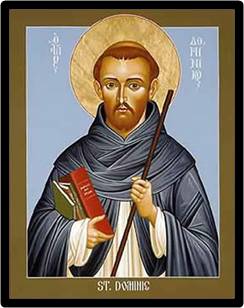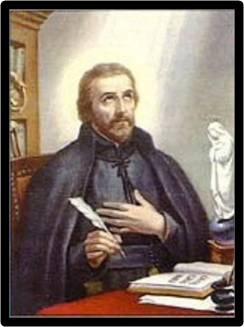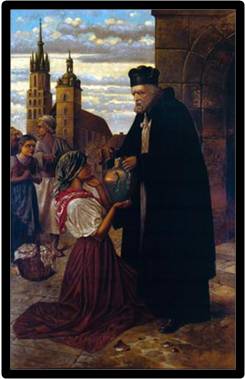DECEMBER 20 - ST. DOMINIC OF SILOS

Dominic was a shepherd boy and was born at Navarre in Spain. He spent many hours alone with his sheep at the bottom of the Pyrenees mountains. It was there that he learned to love to pray.
When he was old enough he became a Benedictine monk and a very good one. Dominic was appointed abbot of his monastery and brought about many changes for the better.
One day, however, King Garcia III of Navarre, Spain, claimed that some of the monastery's land was his and wanted it back but St. Dominic refused. He did not think it was right to give the king what belonged to the Church. This made the king very angry and he forced Dominic and two of his brother monks to leave his kingdom.
Abbot Dominic and his monks were given a friendly welcome by another king, Ferdinand I of Castile. Ferdinand told them they could have an old monastery called St. Sebastian at Silos. This monastery was located in a lonely spot and was very run-down.
But with Dominic as the abbot, it soon began to take on a new look. He strengthened it spiritually, financially and rebuilt the structure. In fact, he made it one of the best-known monasteries in all Spain that survives even today.
St. Dominic worked many miracles to cure all kinds of sicknesses especially for childless couples who prayed for the gift of children.
Many years after his death, Dominic appeared to a wife and mother. Her name was Joan. Now she is called Blessed Joan of Aza. Dominic told her that God would send her another son.
When that son was born, Joan gratefully named him Dominic. And this son became the great St. Dominic, founder of the Dominican order. Saint Dominic of Silos died on December 20, 1073.



